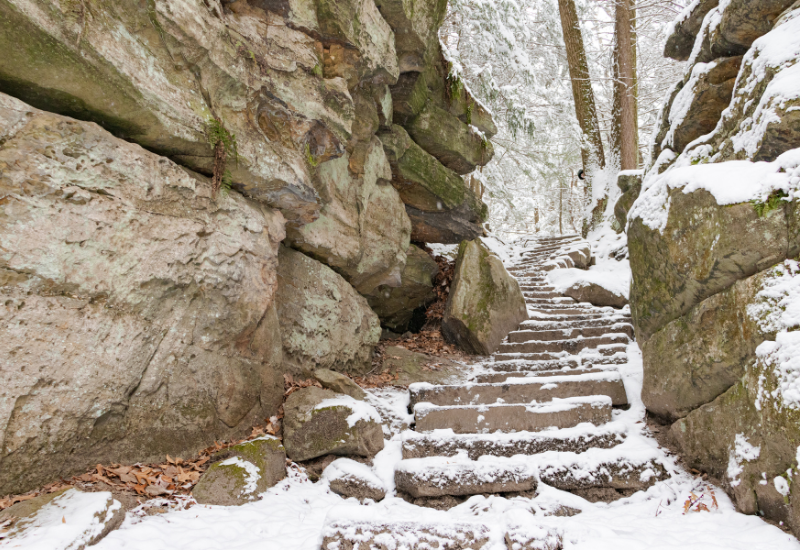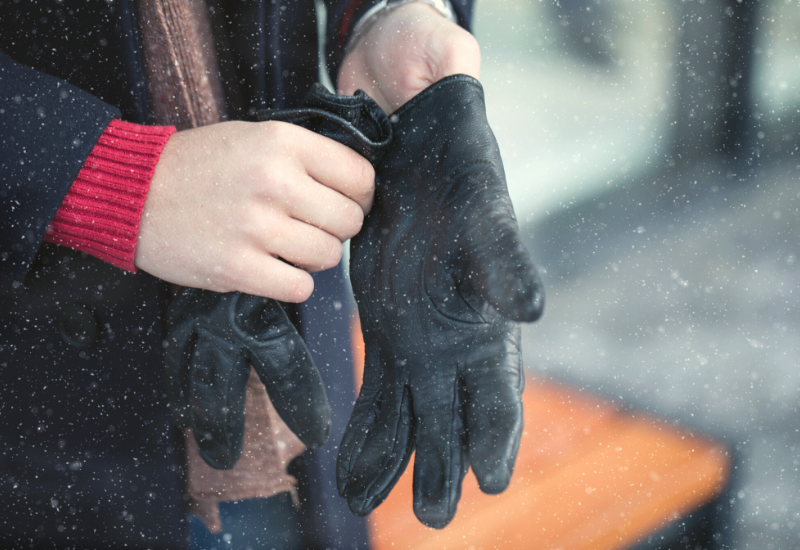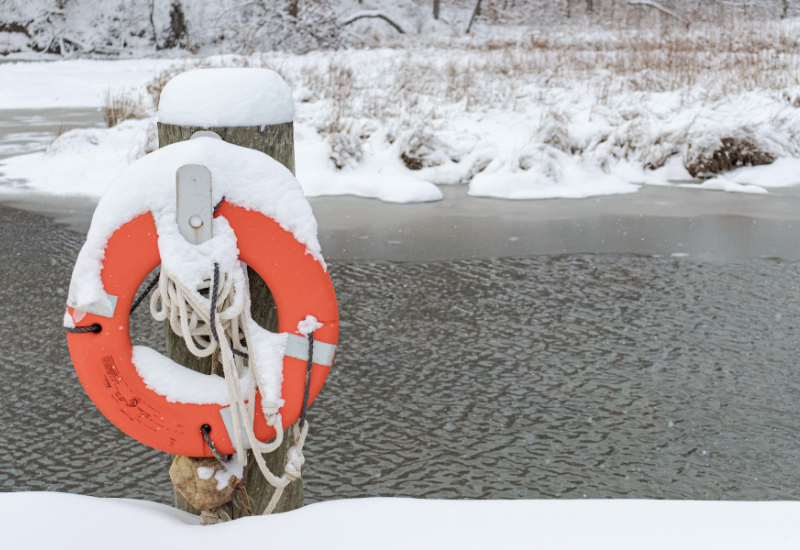Did you know that January is often the coldest month of the year in Northeast Ohio? With temperatures dipping below freezing (sometimes even below zero degrees!), it’s important to know how to stay safe and avoid dangers like frostbite. Learn how to recognize the signs of frostnip and frostbite, the difference between the two and how to prevent them from happening on your next trip to CVNP.

Frostnip vs Frostbite
Frostnip is distinct from frostbite and often precedes it. One of the body’s most important protective measures against getting too cold is to shift blood away from the skin, keeping it closer to your core organs for warmth.
Frostnip occurs due to this reduced blood flow in an area of skin that isn’t adequately protected—usually cheeks, ears, or nose. It is a superficial, or shallow, cold injury where ice crystals appearing as frost may form on the skin surface but do not form within the deeper tissue.
Numbness resolves quickly after warming the skin with appropriate clothing, direct contact, breathing with cupped hands over the nose, or gaining access to shelter. No long-term damage occurs with frostnip, although it can take a week or so for some skin to fully heal, similar to a mild sunburn.
Frostnip injury is both a failure to cover up adequately and a warning that conditions are present for frostbite injuries to occur. Frostbite can be much more damaging and precautions need to be taken to avoid it.

How to Prevent Frostbite
The adage that “prevention is better than treatment” is especially true for frostbite, which is typically preventable and often not improved by treatment. Underlying medical problems and some medications may increase the risk of frostbite, so prevention must address both environmental and health-related aspects.
Frostbite occurs when the body cannot prevent the freezing or injury of soft tissue. Cold-induced numbness can be a warning that a cold-related injury may be imminent and that protective or avoidance measures need to be taken.
Ways to prevent frostbite include:
- Maintaining an adequate core temperature.
- Keeping your body well hydrated.
- Ensuring adequate nutrition.
- Covering all skin, including the scalp, to insulate your body.
- If possible—wearing mittens instead of individually fingered gloves, as they tend to keep your fingers a bit warmer.
- Avoid wearing tight, blood-restricting clothing. This allows better blood flow and easy movement.

Recognition and Treatment
If you’re out in the park and an area of your body—exposed or not—begins to go numb, get indoors or try to warm the area immediately! This is your body warning you that it is getting too cold. Protect your body from moisture, wind and cold by changing out of any wet clothing and adding more dry layers.
If you cannot shake the cold, the best way to rewarm skin that has minor freezing damage is in a warm bath. Be very careful as you gauge the temperature of the water, as numbed tissue won’t be as able to assess the true temperature. Be careful not to burn yourself and make sure to never rewarm tissue if there is a risk of the area cooling rapidly again.
Thawing and refreezing can cause more damage to tissue in bad cases of frostbite.
Aloe vera ointment has been shown to improve healing for minor frostbite injuries. Topical treatments do not penetrate far into tissues, however, so aloe vera is only beneficial for superficial injuries.
If you believe a body part or extremity is deeply or fully-frozen, the area should be protected from further damage. Remove jewelry or other tight materials from the body part. Do not rub or apply ice or snow to the affected area—seek medical help immediately!
If you ever need help while in Cuyahoga Valley National Park, call the in-park Emergency Contact Dispatch Center at 440.546.5945.
Special thanks to Conservancy member Dr. Christopher Bazzoli, MD, FAWM for assisting with the creation of this blog post.
Interested in learning more about cold-weather injury prevention? Check out our blog post 7 Ways to Protect Yourself from Hypothermia here.





